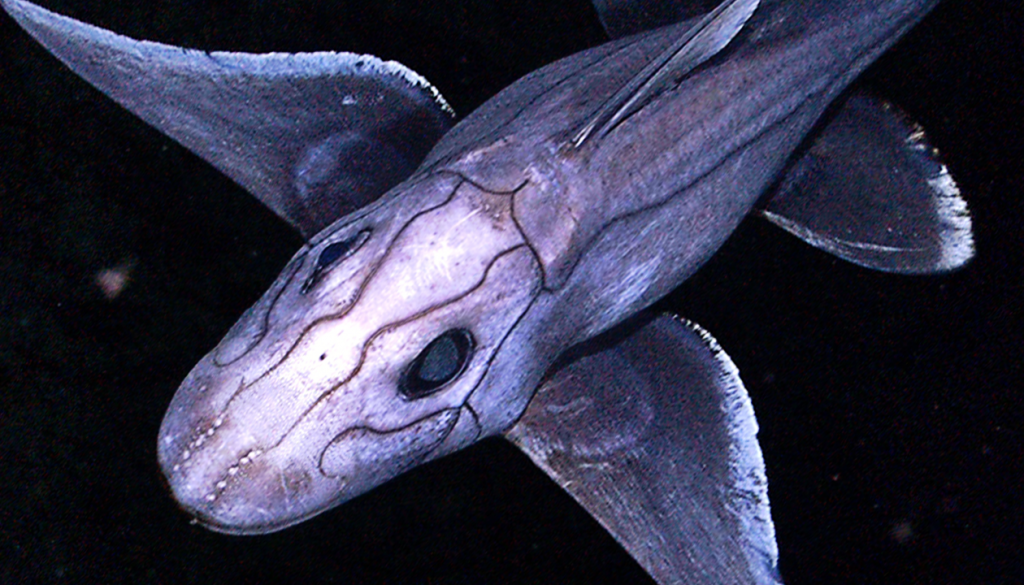
Our voyage will provide the data required to manage these parks into the future. The Australian government recently announced a process to create new marine parks in the Christmas and Cocos (Keeling) regions. But these fascinating communities are vulnerable to human activities such as deep-sea trawling and mining for precious minerals. These in turn host numerous other deep-sea animals. Currents swirl around them, bringing nutrients from the depths or trapping plankton from above, which feeds the growth of spectacular fan corals, sea whips, and glass sponges.

Seamounts are special places in the deep-sea world. Feather stars and brittle stars have evolved multiple arms to reach up into passing currents. We are truly excited at what we may find. These seamounts are ancient-up to 100 million years old-and almost totally unexplored. In July and August, I will lead a 45-day voyage of exploration on Australia's oceanic research vessel, the RV Investigator, to seamounts around Christmas and Cocos (Keeling) Islands in the eastern Indian Ocean. While our new species is from the southwest Pacific, seamounts occur worldwide and we are just beginning to explore those in other oceans. Its sunlit past is remembered in rock as a layer of fossilized reef animals around the summit. Given enough time, the seamount will subside hundreds or even thousands of meters below sea level and gradually become covered again in deep-sea fauna. The volcano can eventually rise above the sea surface, forming an island volcano such as those in Hawaii, sometimes with coral reefs circling its shoreline.īut eventually the volcano dies, the rock chills, and the heavy basalt causes the seamount to sink into the relatively soft oceanic crust. Lava oozes or belches from vents in the seafloor, continually adding layers of basalt rock to the volcano's summit like layers of icing on a cake. Seamounts, like the one on which Ophiojura was found, are usually submerged volcanoes that were born millions of years ago. This is where we find the "relicts" of ancient marine life-species that have persisted in a relatively primitive form for millions of years. Perhaps a more accurate way to describe these evolutionary loners is with the term "paleo-endemics"-representatives of a formerly widespread branch of life that is now restricted to just a few small areas and maybe just a single solitary species.įor seafloor life, the center of paleo-endemism is on continental margins and seamounts in tropical waters between 200 meters and 1,000 meters deep. The ancestors of Ophiojura would have continued evolving, in admittedly very subtle ways, over the past 180 million years. Living organisms don't stay frozen in time for millions of years without changing at all.


Scientists used to call animals like Ophiojura "living fossils", but this isn't quite right. Since then, Ophiojura's ancestors continued to evolve, leading ultimately to the situation today, in which it is the only known survivor from an evolutionary lineage stretching back 180 million years.Īmazingly, we have found small fossil bones that look similar to our new species in Jurassic (180 million-year-old) rocks from northern France, which is further evidence of their ancient origin. Black/University of Melbourne, Author provided

The colour in this micro-CT scan reflects the density of the skeleton. This means their most recent common ancestor lived during the Triassic or early Jurassic period, when dinosaurs were just getting going.īristling teeth poke out from all eight jaws, ready to pierce and shred prey. We compared DNA from a range of different marine species, and concluded that Ophiojura is separated from its nearest living brittle star relatives by about 180 million years of evolution. It is one of a kind-the last known species of an ancient lineage, like the coelacanth or the tuatara. And the teeth! A microscopic scan revealed bristling rows of sharp teeth lining every jaw, which I reckon are used to snare and shred its prey.Īs my colleagues and I now report in Proceedings of the Royal Society B, Ophiojura does indeed represent a totally unique and previously undescribed type of animal. The eight arms, each 10 centimeters long and armed with rows of hooks and spines. Ophiojura is a type of brittle star, which are distant cousins of starfish, with snake-like arms radiating from their bodies, that live on sea floors around the globe.īeing an expert in deep-sea animals, I knew at a glance that this one was special when I first saw it in 2015.


 0 kommentar(er)
0 kommentar(er)
